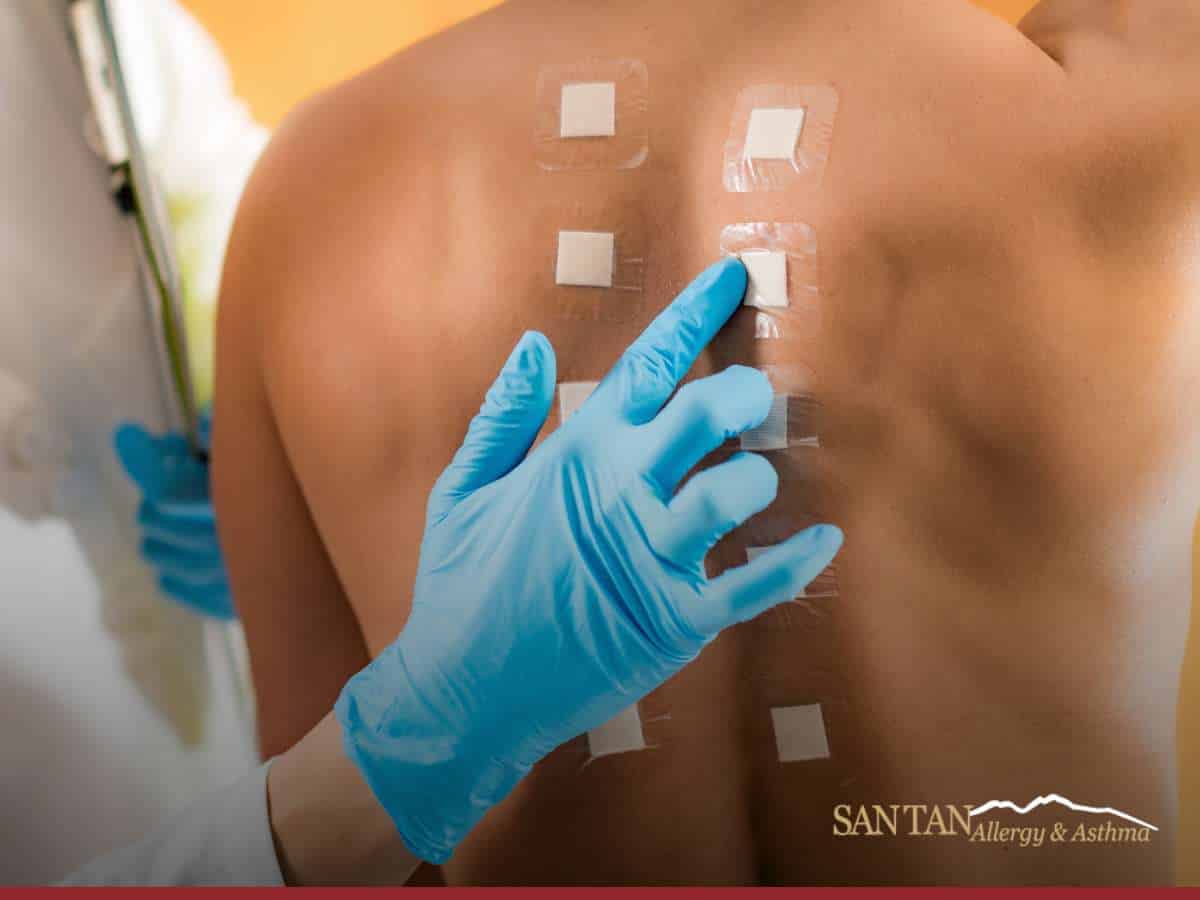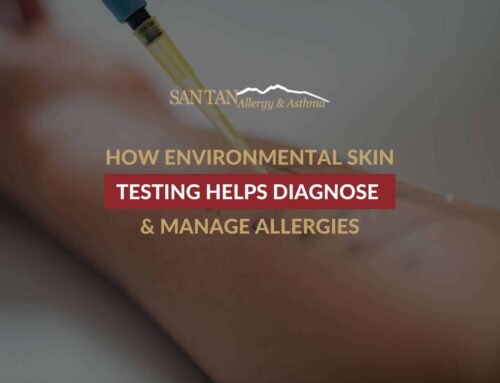The Benefits Of Skin Patch Testing For Allergy Diagnosis
Skin patch testing is a vital procedure for determining the causes of allergic reactions, especially those related to skin conditions like allergies, eczema, and contact dermatitis. If you or your child have been scheduled for a patch test, it’s important to prepare adequately to ensure the most accurate results.
Below, we outline the necessary steps to take before, during, and after the patch test. By following these guidelines, you can optimize the effectiveness of the test and avoid any complications.
What Are Skin Patch Tests?
A skin patch allergy test is used to identify the substances causing allergic contact dermatitis, a reaction triggered when certain allergens come into contact with the skin. This test involves placing patches containing various allergies on your skin and monitoring any allergic reactions.
The patches are typically applied to the back and left in place for a couple of days. Afterward, the test site is examined to detect any signs of irritation or allergic reaction. If any allergic reactions occur, they will be carefully assessed to pinpoint the specific substances causing the allergies.
Skin patch testing provides invaluable insights that lead to more precise and personalized treatment strategies. By identifying exact allergens, patients often experience greater symptom relief and improved management of chronic skin conditions such as eczema and dermatitis.
How To Get Ready For Your Skin Patch Test Step By Step
Preparation is crucial for the success of the patch test. To ensure that the results are accurate and reliable, you’ll need to follow several important instructions leading up to the test.
1. Avoid Sun Exposure
One of the first steps in preparing for a skin patch test is to avoid sun exposure for at least one to two weeks before the procedure. Direct sunlight can affect the skin’s response to allergens, potentially altering the results of the test. For this reason, it’s best to stay out of the sun and avoid tanning during this period.
2. Discontinue Topical Medications
You’ll need to refrain from using topical medications like creams and ointments on the area where the patches will be applied. This includes any prescribed skin treatments, as well as over-the-counter products. These medications can interfere with the test’s ability to detect a proper reaction. If you must continue using medications on other parts of your body, ensure that they are not applied to the back or the areas where the patches will be placed.
3. Avoid Moisturizing Before the Test
To get the best results from your patch test, avoid using creams, ointments, or moisturizers on the test area for at least 24 hours beforehand. It’s okay to keep your skin moisturized up until the day before but stop using any products a day before the test. This helps the patches stick properly, as moisturizers and oils can make it harder for them to stay in place.
4. Inform Your Doctor About Antihistamine Use
If you or your child are taking antihistamines, be sure to inform an allergy expert. Antihistamines can potentially interfere with the test’s results by reducing the skin’s response to allergens. Depending on the specific antihistamine and the test, your doctor may advise you to stop taking them for a few days before the procedure.
What To Expect During The Patch Test
Once the test day arrives, it’s important to be aware of what to expect throughout the process. The patch test is typically carried out in three stages: the initial patch application, patch removal, and follow-up examination.
1. Patch Application
During the first visit, the patches are applied to your skin, usually on the back. These patches contain small amounts of common allergens that may cause skin reactions. Your doctor or nurse will apply a marker to outline the edges of the patches, ensuring that they stay in place during the testing period. The patches are secured with tape or other sticky bandages and are typically left on for 48 hours, although the duration may vary depending on the specific testing protocol or individual circumstances.
It’s essential that the patches remain undisturbed during this period. Avoid scratching or rubbing the area to prevent the patches from falling off or being displaced. Also, try to refrain from exposing the test site to excessive moisture, heat, or sweating, as these conditions can affect the test results.
2. Patch Removal
Generally, two days after the patches are applied, you’ll return to the clinic for the patch removal process. During this visit, your doctor or nurse will carefully remove the patches and examine your skin for any immediate signs of a reaction. In some cases, the timing of patch removal may vary based on the specific testing protocol or individual circumstances.
In many cases, you may not notice a reaction right away, but it’s still important to return for the final examination. If any allergies are triggered, the reaction will be carefully evaluated. After the patches are removed, you should avoid applying any creams, ointments, or moisturizers to the area where the patches were placed.
Keep the skin clean and dry until the next visit. Additionally, you’ll need to avoid activities that cause excessive sweating or heat, as these can impact the test results.
3. Final Assessment
The third visit typically occurs 4 to 5 days after the patches are initially applied. This is when the final evaluation takes place. Your allergy doctor will examine the skin to check for any delayed reactions. Even if there were no visible reactions in the first two days, this final visit is crucial for identifying any reactions that may take longer to develop.
At this point, your doctor will be able to pinpoint any allergens that caused a reaction, allowing you to avoid them in the future. If there were no reactions, you can resume normal activities, including applying moisturizers and creams.
Post-Patch Test Care: Tips For Healthy Skin
After the final assessment, you’ll be given instructions for caring for your skin. Depending on the results, your doctor may recommend avoiding certain substances or making lifestyle changes to manage allergies more effectively. If a reaction occurred, your doctor may discuss possible treatments or alternative methods for allergy relief.
Additionally, once the patch test is complete and the results are evaluated, you may be given guidance on how to manage any ongoing symptoms, such as skin irritation or eczema. It’s important to follow these instructions closely to ensure that your skin heals properly.
Why Choose Patch Testing?
Patch testing is an essential tool for diagnosing allergic reactions that may not be immediately obvious. For individuals suffering from skin conditions like eczema, or chronic dermatitis, patch testing can be a game-changer.
By pinpointing the exact allergens causing the reaction, doctors can provide more targeted treatment options, such as allergy medications or topical treatments. This approach often leads to better long-term management of allergies and skin conditions.
If you or a loved one is dealing with skin irritation or allergic reactions and suspect allergens are the cause, it’s important to consult with an allergy doctor who can offer expert advice and testing. Patch testing is a safe, effective way to identify the specific substances responsible for your skin issues, providing the foundation for a personalized treatment plan.
Key Takeaways On Preparing For & Undergoing a Skin Patch Test
Skin patch testing is a crucial diagnostic tool that can help identify the substances causing allergic reactions on the skin. By following the preparation guidelines outlined in this article, you can ensure that the test results are as accurate as possible. Be sure to avoid sun exposure, discontinue certain medications, and follow the care instructions provided by your doctor during the test.
Get Expert Guidance for Your Skin Patch Test – Contact San Tan Allergy & Asthma Today!
For expert allergy testing and care, trust the professionals at San Tan Allergy & Asthma. Our team of experienced allergy doctors is here to help you manage your allergies and find the relief you need. Contact us today to schedule an appointment or learn more about our services.
San Tan Allergy & Asthma
4915 E Baseline Rd #112
Gilbert, AZ 85234
Phone: 480-626-6600
Email: officemanager@santanallergy.com
Website: https://santanallergy.com/









